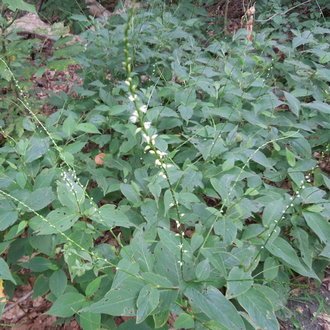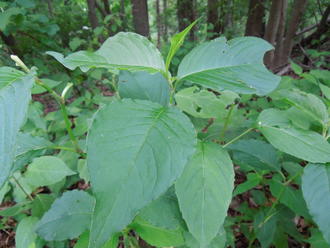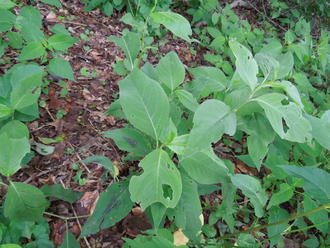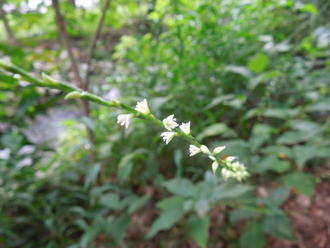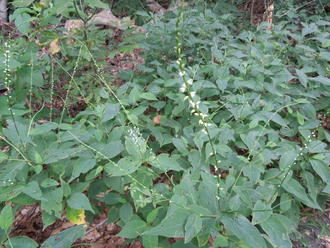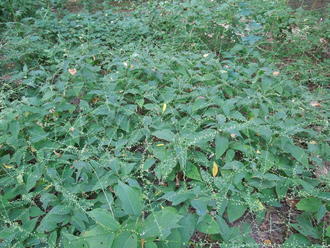Jumpseed (Persicaria virginiana L.)
Also known as Virginia knotweed; also classified as Polygonum virginianum L., Antenoron virginianum (L.) Roberty & Vautier.
↑Summary
One of the most shade-tolerant of the Persicaria genus, or smartweeds, this perennial is a woodland plant named for its spring-loaded seeds, which "jump" several feet when something brushes against them.
↑Range - Expand
| Legend | Color |
| Native | |
| Native or Not Present |
This tentative map is based on our own research. It may have limited data on Canada and/or Mexico, and there is some subjectivity in our assignment of plants as introduced vs. expanded. Read more in this blog post.
Although this plant occurs somewhere in each of these regions, it may only occur in a small part of some or all of them.
↑Habitat
Moist deciduous woodlands and woodland clearings, especially in floodplains. Prefers moist but well-drained areas; absent both from poorly-drained and dry areas.
↑Life Cycle
A perennial that reproduces vegetatively from underground rhizomes. Forms dense colonies or thickets on favorable sites. Yearly seed production is small until the plant is established, which can take several years.
Blooms mid-summer, but sometimes continues blooming into fall; flowers are small, white, and relatively inconspicuous. Seeds mature gradually, a few maturing at a time, and continue ripening into fall.
Seeds are attached by a spring-loaded mechanism which becomes more easily released as the seeds ripen, and can be thrown several feet when something brushes against them. The hooked tips of the seeds also can stick to animal fur or clothing, also distributing the seeds.
↑Uses
Widely cultivated as a garden plant, typically as cultivars selected for variegated leaves and longer persistence of the reddish chevron pattern on the leaves. Many cultivars also have reddish unripe seeds. Variegated cultivars are typically less vigorous than wild plants, and require higher light levels as their leaves contain less chlorophyll.
↑Related Plants
Numerous other Persicaria species, including both native and introduced ones, overlap with this plant's range. However, they usually occur in sunnier habitats.
↑Links & External Resources
• Persicaria virginiana (Jumpseed) | USDA PLANTS Database (About This Site)
• Persicaria virginiana | Go Botany (About This Site)
• American Jumpseed | iNaturalist (About This Site)
• Persicaria virginiana (Knotweed) | Missouri Botanical Garden Plant Finder (About This Site)
• Persicaria virginiana | Biota of North America Project (BONAP) (About This Site)
• Polygonum virginianum | NatureServe Explorer (About This Site)
• Persicaria virginiana | Flora of North America (About This Site)
• Antenoron virginianum (Jumpseed) | Illinois Wildflowers (About This Site)
• Persicaria virginiana | Missouri Plants (About This Site)
• Jumpseed | Maryland Biodiversity Project (About This Site)
• Persicaria virginiana (Jumpseed) | Minnesota Wildflowers (About This Site)
• Persicaria virginiana (L.) Gaertn. (Virginia Knotweed, Jumpseed) | Digital Atlas of the Virginia Flora (About This Site)



